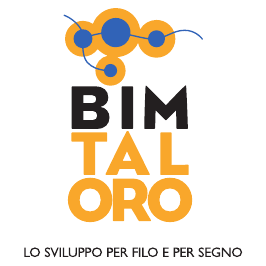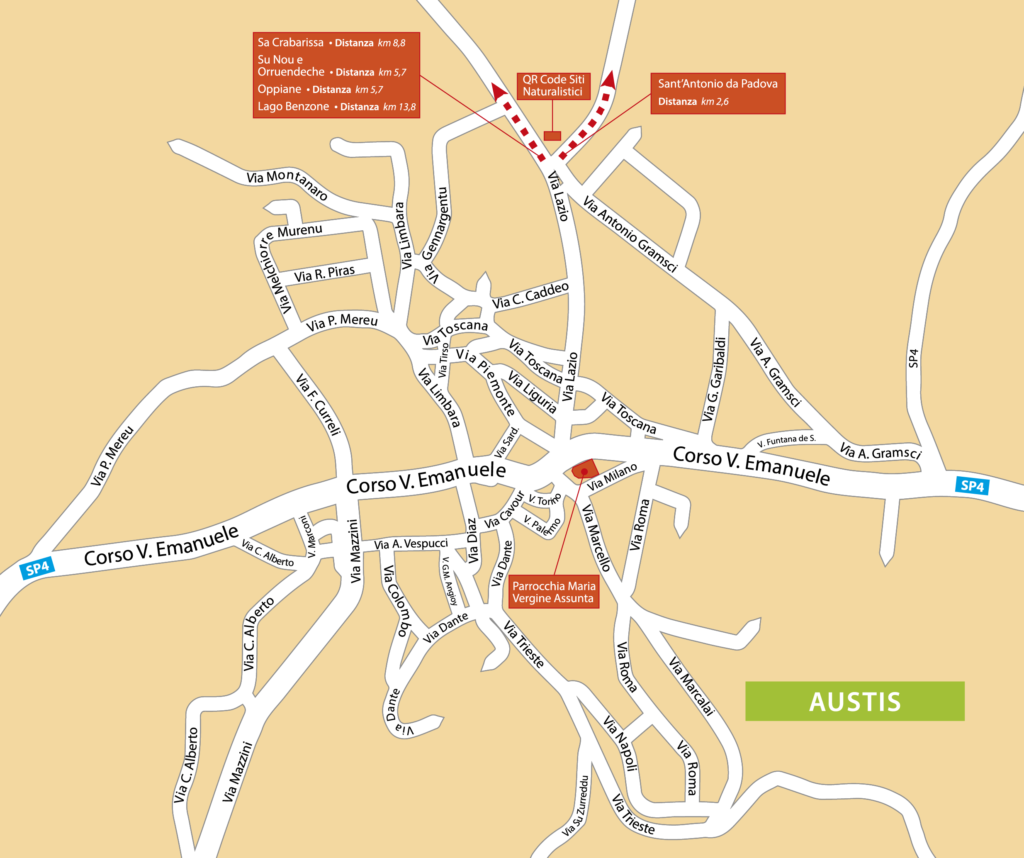Church of the Beata Vergine Assunta
The Parish Church of the Beata Vergine Assunta stands in an elevated position above the main road, and was constructed in 1567 in an area where a church dedicated to St Augustine, of which no trace remains, once stood. Information about it comes from the chronicles of the Camaldolese annalists who attest to its existence in 1213, when the Archbishop of Oristano Bernardo Omodeo, during the reign of Constantine II Judge of Arborea, decided to donate it to the Camaldolese of Bonarcado.
At the express wish of the bishop, only in that church was Baptism ‘by immersion’ in the Byzantine rite celebrated, once a year. This was very well attended by the faithful, even from neighbouring towns.
The current place of worship has undergone numerous interventions and alterations over time, which have undoubtedly modified its original architectural features; the last changes date back to 1950.
The façade is plainly plastered with an arched portal surmounted by a large round window, and a small iron cross at the apex of the gabled roof.
The square bell tower rises on the left side, with a small access door and, in the upper floors, two narrow arched windows; the bronze bells are visible in the upper one.
Adjacent to the building are the parish house on one side and the oratory on the other.
Inside, the church has a single nave with three pointed arches in red trachyte. Two chapels on each side of the hall are also defined by trachyte arches with a decoration carved in stone reproducing the outline of a face, and a stylised tree placed side by side at the junction with the pillars.
The year the church was built is carved at the base of the presbytery arch, on the left, while on the opposite side is an inscription in Greek.
In the area behind the altar is a beautiful dark wooden choir dating back to the 19th century.
Of particular interest and great expressive pathos is the crucifix, created by artist Elio Antonio Sanna, known as Cavallo Pazzo (Crazy Horse), who sculpted it in 1987 from a single trunk of a large pear tree that had withered away.
The statue, located immediately after the entrance to the church on the left, is 2 m high and took two years to make. In order to accelerate the seasoning process of the wood, the artist subjected it to several days of boiling and then carved it in one single piece, except for the arms. In 2001, the work was damaged by a fire, but was immediately restored by the artist himself.
Also by the same hand is the baptismal font, placed next to the crucified Christ, and sculpted in a block of white trachyte on the edge of which is written: Laddu su fizzu meu istimmau, which means:
“Here is my beloved son.”
The same artist also created a Baby Jesus, which is exhibited at Christmas time. The Feast of the Assumption is held on 15 August.
Text by Laura Melis
 BIM TALORO
BIM TALORO 